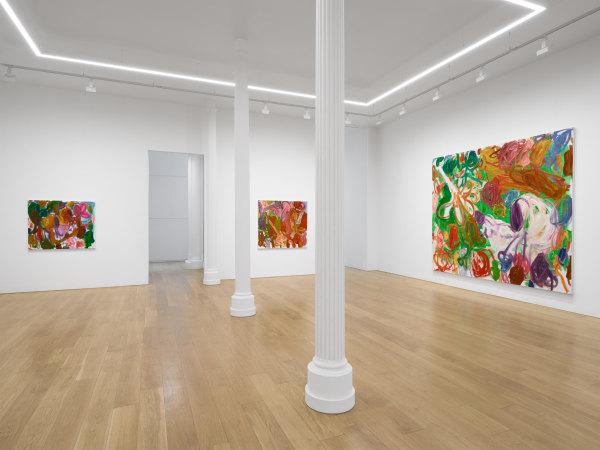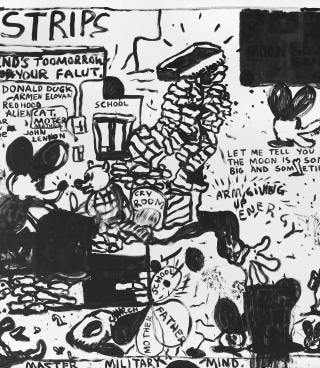Armen Eloyan: Green Grass
Timothy Taylor is pleased to present Green Grass, an exhibition of new paintings by Armen Eloyan in New York. This presentation, the artist’s eighth with the gallery, will feature eight canvases that exemplify his integration of wry, cartoon-related imagery and anarchic abstraction.
Eloyan’s recent paintings teem with explosive energy; each mark recalls the vigorous physicality of the artist’s process. Eloyan works intuitively and fiercely, generating dense fields of abstraction characterized by collisions and contaminations of gesture and form. His engagement with color and nuanced use of a cartoon illustrator’s line trace back from Willem de Kooning to Arshile Gorky, whose work likewise played with pastiche, imitation, and an authentic exploration of the terms of painting. Across the works on view in Green Grass are suggestions of imagery—in particular, the head of a dog that simultaneously recalls Disney’s Pluto, George Herriman’s comics, and the rabbit-duck illusion used in psychology to query aspects of perception and interpretation. This head recurs, often in profile; its eyes—stimulated, vertical ovals—are mirrored by the creature’s chiclet teeth and by various echoing loop forms that suggest flowers in places and phalluses in others. Another motif threads through the paintings: outstretched arms that seem to gesture wildly. Eloyan builds up a visual language through repetition and intuitive mark-making, warping and obscuring his figuration with volatile pictorial events.
Verdant green hues connect the canvases on view, seemingly citing the chaotic compositions in nature. In some canvases, luminous chartreuse evokes manicured grass, and in others, umbral tangles of mulchy green reads like thick woodland. Eloyan is interested in the way formal elements respond to each other, the way a dog head, for example, will signify differently when placed among varied environments. With these heavily worked canvases, he decontextualizes familiar figures, offering up a satirical yet impassioned reflection on questions of influence, appropriation, and presentation.













